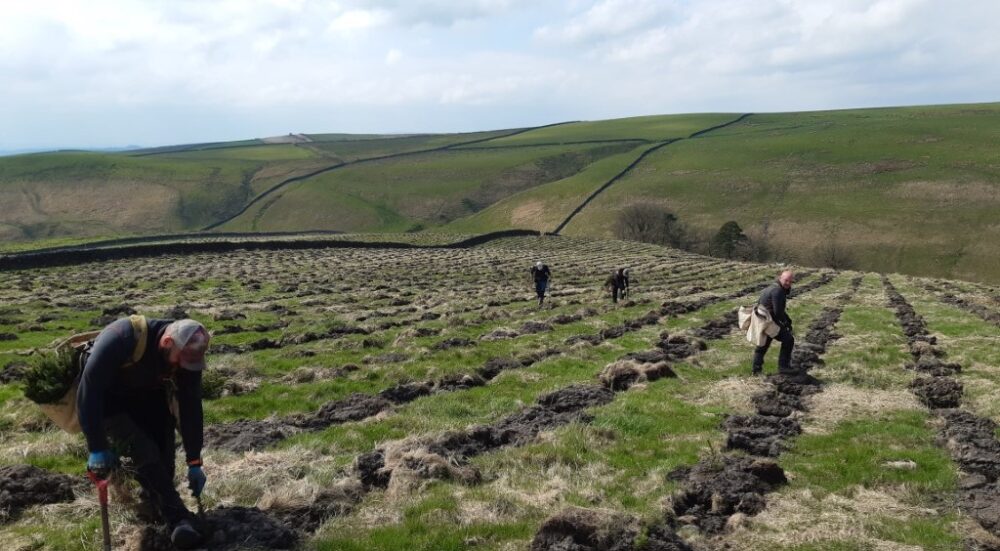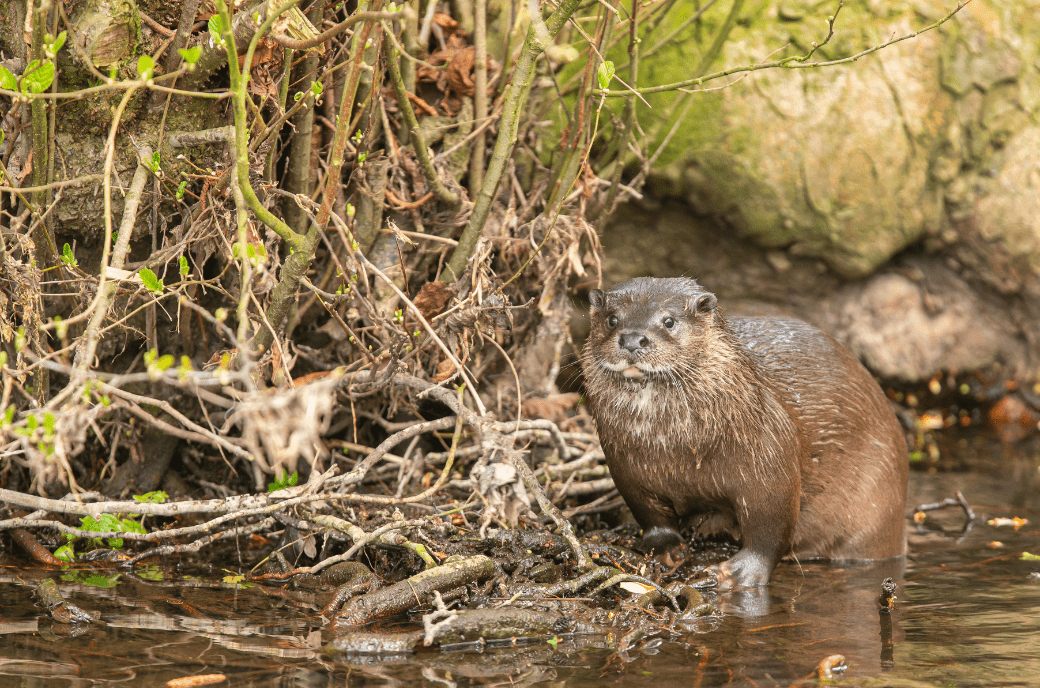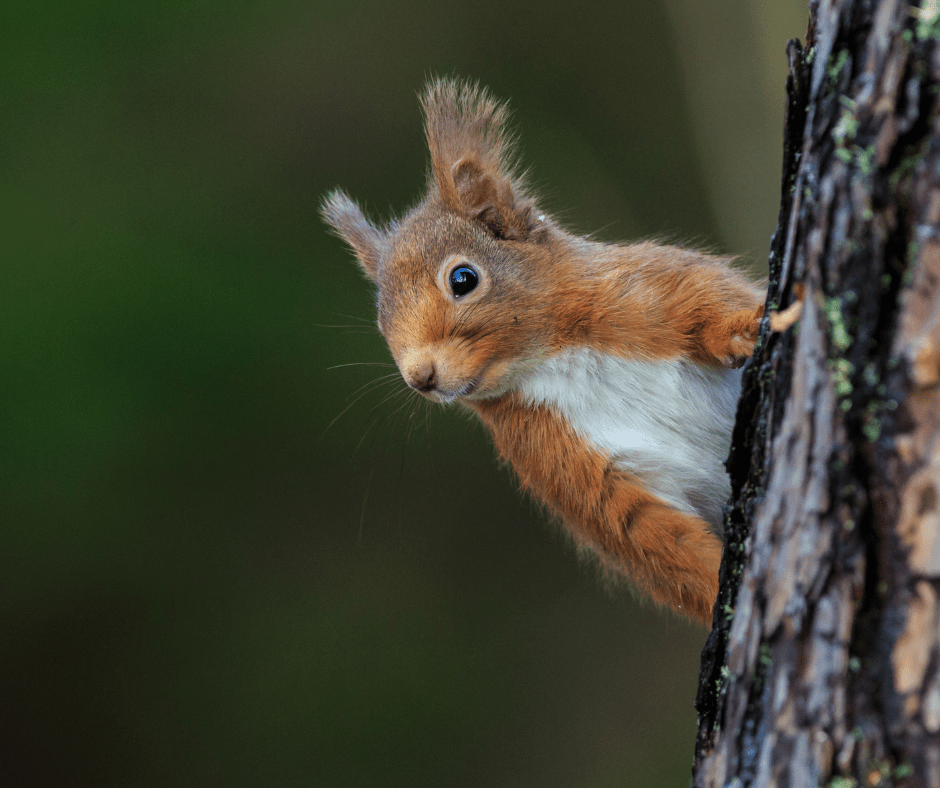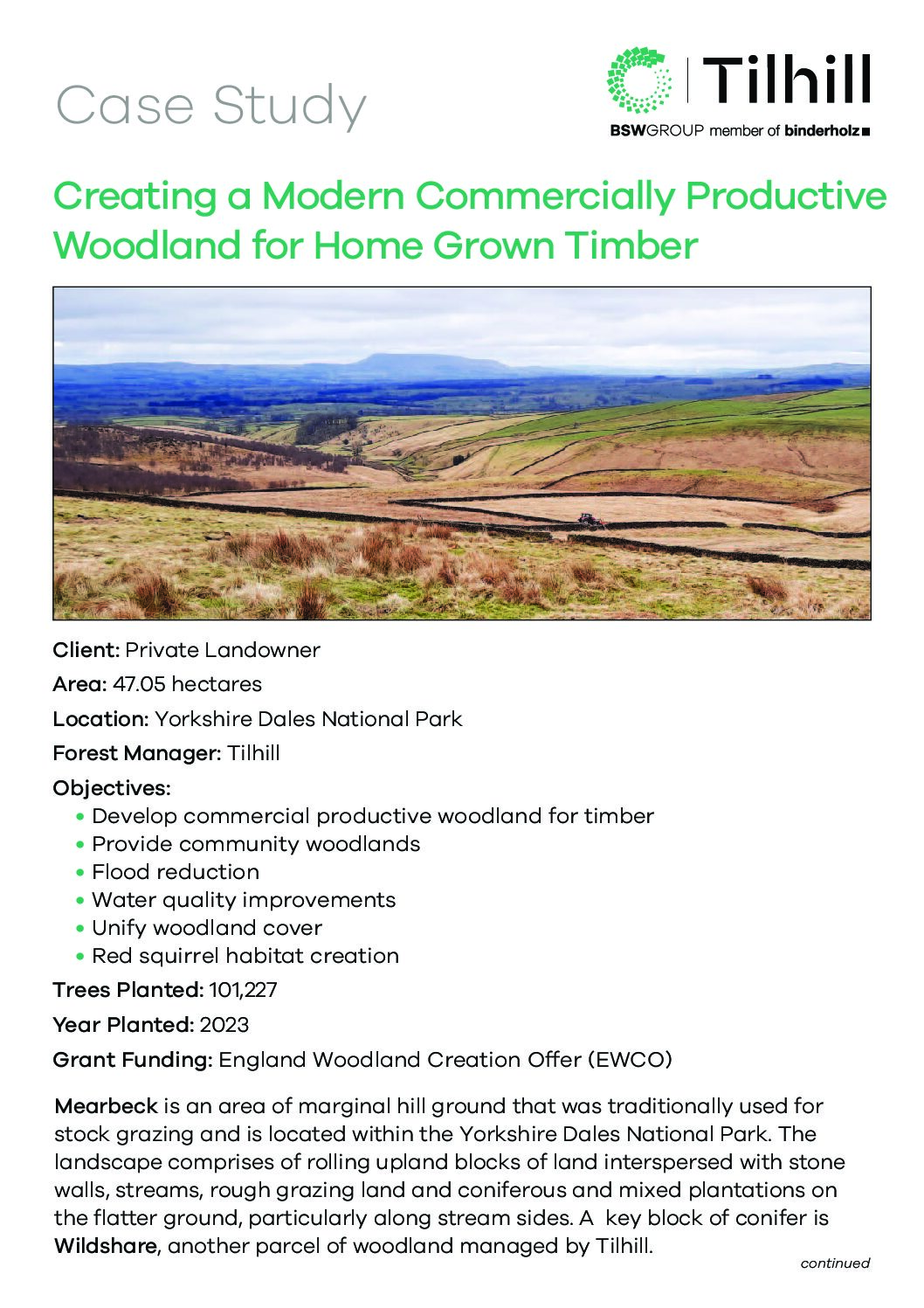Objectives:

Develop commercial productive woodland for timber
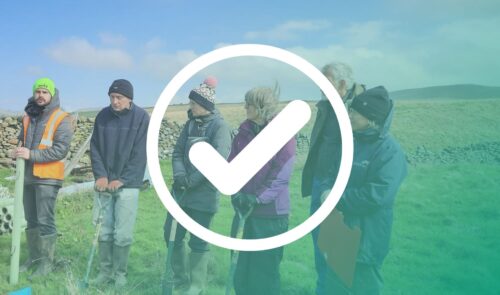
Provide community woodlands

Flood reduction

Water quality improvements

Unify woodland cover

Red squirrel habitat creation
Project and Partners
Tilhill, working with the landowner and other partners, designed and implemented the woodland creation project at Mearbeck, near Settle. The project saw the creation of a new access track into the forest alongside ground preparation, fencing works and the planting of over 100,000 mixed tree species to deliver a new woodland across 47 hectares of upland semi-improved acid grassland. The aim was to diversify the land for economic, environmental and social benefits.
The Woodland Carbon Code’s Carbon Calculator indicates around gross 20,000 tonnes of CO2e will be sequestered through the woodland creation project over a 50-year cycle (the equivalent of driving 5 million miles in a petrol car).
Tilhill is working in partnership with Yorkshire Dales Millennium Trust (YDMT), a charity which supports people, landscape and wildlife in the Yorkshire Dales, in a three-year agreement to deliver parts of the recreational access requirement of the EWCO grant (England Woodland Creation Offer), which includes maintenance work and infrastructure such as signage and way markers.
YDMT Trust also planted 1,220 broadleaf trees in April 2023 (see more in ‘community and engagement’ at the end of this case study).
Challenges
The conversion of open ground to woodland at Mearbeck had the potential to adversely impact waders, especially Curlew – a species of significant nature conservation concern. This risk had to be fully assessed which included a full breeding bird survey and detailed discussions with Natural England and Forestry Commission.
Through consideration of existing woodlands, Tilhill in discussion with stakeholders were able to inform the design to avoid encroachment of the new woodland and its associated predator shadow into fully open land, thus minimising any potential adverse impacts of the new woodland on breeding waders. The design also included riparian woodland development, native woodland areas for greater diversity and structure, creation of woodland habitat corridors, improved water catchment resilience and public amenity benefits
Water Quality and Flood Reduction
A priority objective of the scheme is to grow a high quality, UKFS (UK Forest Standard) compliant woodland which will deliver additional benefits including water quality improvement and flood risk reduction. Once the trees are established, they should slow the flow of water to help reduce flood risk in the area and filter rainfall thus improving water quality. Native trees have been planted in riparian zones and over time the roots will stabilise the riverbanks, reducing bank erosion.
Unified Woodland Cover
Site objectives included the increase and unification of woodland cover in this transitional landscape at the margins of the Yorkshire Dales National Park. The local area of Wildshare already includes significant woodland cover with mixed/conifer woodland to the north and native broadleaves to the south.
The existing woodland area had harsh rectilinear boundaries and these have now been addressed with the planting of the new woodland – connecting new woodlands to old, softening harsh boundaries and improving woodland unity, landform pattern and scale. The new woodland design and implementation will offer a more cohesive and enhanced landscape.
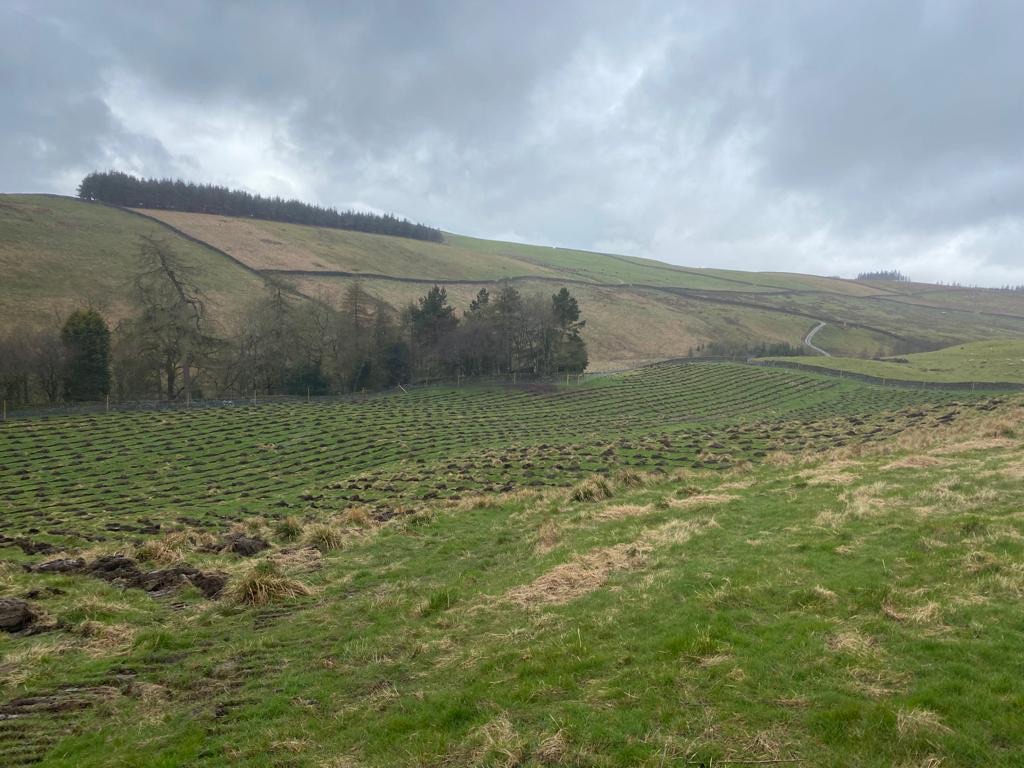
Wildshare with Mearbeck site after ground preparation and planting
Commercial Productive Woodland
The woodland creation project supports the UK Government’s ‘A Green Future – 25 Year Environment Plan’ through increasing the long-term supply of English-grown sustainable timber.
Tree stock, such as improved Sitka spruce, was planted to enable faster growth rates and a higher return in timber volume at the end of a rotation to deliver quality construction-grade strength timber for local sawmills.
The forest will, in the future, continuously supply sustainable timber to local sawmills to create a range of forest products such as construction timber for house building, garden and landscaping products such as fencing, sleepers and decking and co-products such as sawdust, pellets and wood chip for energy, horticulture and farming industries
Road Building
Roading was installed to allow access to the forest and to facilitate deliveries, fencing and planting and for long-term management. The installation of a road also facilitated access to further Forestry Commission capital grant funding; the Yorkshire Dales National Park Authority confirmed permitted development rights for forest management access to support
sustainable woodland management.
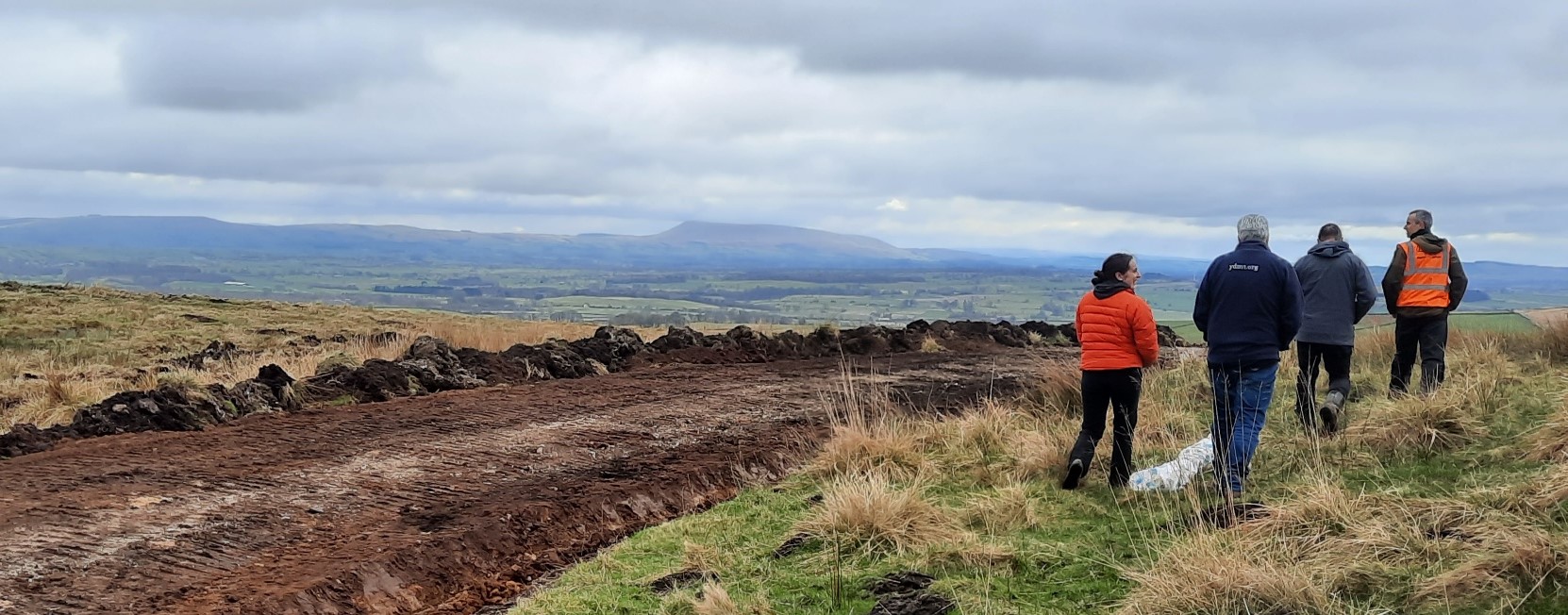
Road building foundations
Ground Preparation
The project used minimal ground preparation methods to minimise soil carbon release prior to planting. Groundworks included pre-flailing all fields, and continuous mounding all areas. Mounding as a ground preparation method allows for better root symmetry and reduces soil compaction, creating an elevated microsite above the water table, free of competing vegetation.
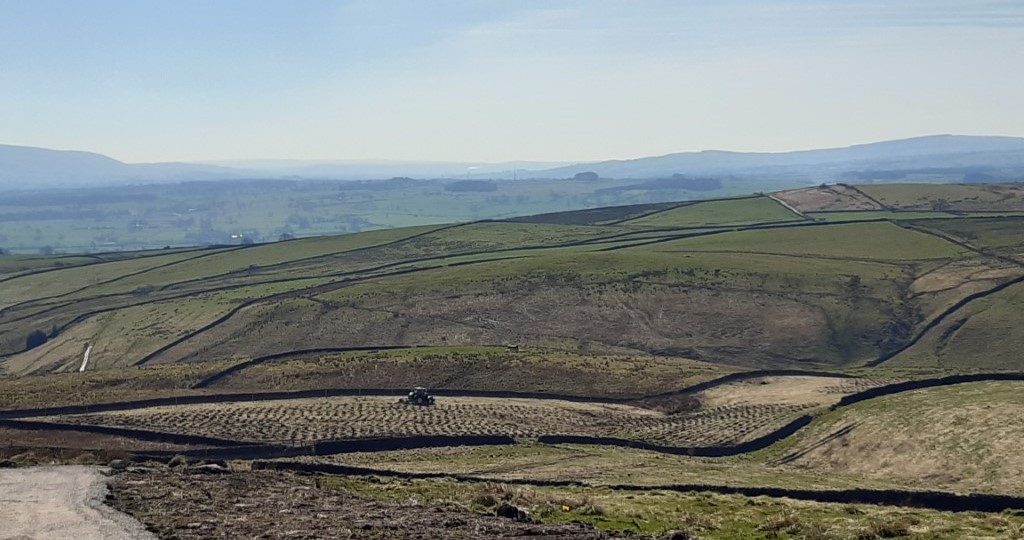
Ground Preparation at Wildshare and Mearbeck
Wildlife
Raptor perches will be installed to help increase the presence of birds of prey in the area, which in turn help control voles and rabbits which can often gnaw on young saplings, weakening or even killing the trees.
Before planting, high seats were installed to help with deer and rabbit management.
Riparian planting alongside watercourses will create shade for the existing populations of Otter known to be on the site. As the trees grow, they provide shade which reduces water temperature.
Red Squirrel Habitat Creation
Red squirrels are native to the UK but have become threatened by grey squirrels and habitat loss. This woodland creation project aims to create habitat for red squirrels through woodland connectivity increasing their habitat area. Scots Pine and Norway spruce were specifically planted to encourage red squirrel into the area, extending the species habitat.
Species Choice and Tree Planting
101,227 trees were planted comprising of conifers including improved Douglas fir, Sitka spruce and
Norway spruce, for future timber production and native Scots pine in a mixture with oak.
The site compromises of open ground and a selection of native broadleaf trees including oak, birch, cherry, hawthorn, hazel, rowan and aspen. These were planted to improve biodiversity and habitat for wildlife through their provision of fruits, flowers and leaves as food and shelter. Sycamores were also planted for structural diversity and to attract a variety of insects such as aphids. Chosen tree species will also provide pollen and nectar for bees and seeds for smaller mammals.
Goat willows were planted due to their immense benefits to wildlife, such as butterflies and caterpillars which feed on their foliage. Their catkins offer early pollen and nectar for various bees and insects which also attract more birds.
The choice of species offers a diverse mix of fast-growing home-grown timber producing species and native species for wildlife.
15% of the site has remained as open ground, and is aimed at increasing biodiversity, this area is above the 10% required by UKFS. Open space habitat benefits different wildlife species such as reptiles, insects and birds alongside providing carbon storage in the soils.
Ongoing management will maintain the newly planted trees to ensure full stocking density. The conifers have been planted in intimate mixtures to facilitate future thinning.
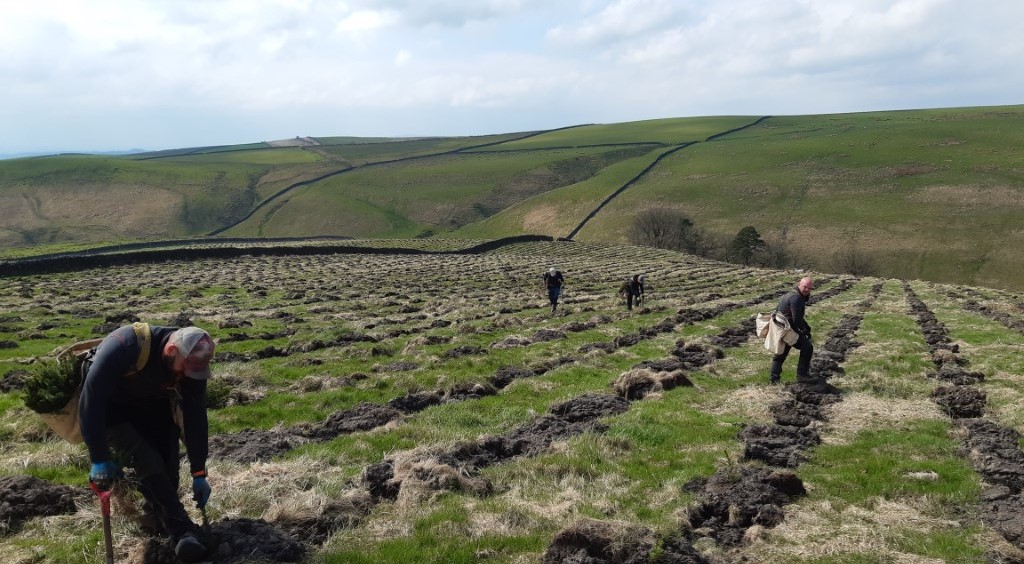
Tree Planting at Wildshare with Mearbeck
Tree Protection
Over 3,000 metres of deer fencing, rabbit netting and water gates were installed to prevent damage from deer, rabbits, and hare and a small amount of broadleaved trees have been planted with individual tree guards to protect them from harsh weather, rabbit, and deer damage.
Tilhill will remove the tree guards after establishment and YDMT will ensure the removal of any planting guards within the broadleaf area once the trees are fully established. The guards will be recycled as part of a partnership-led recycling hub scheme with Tubex.
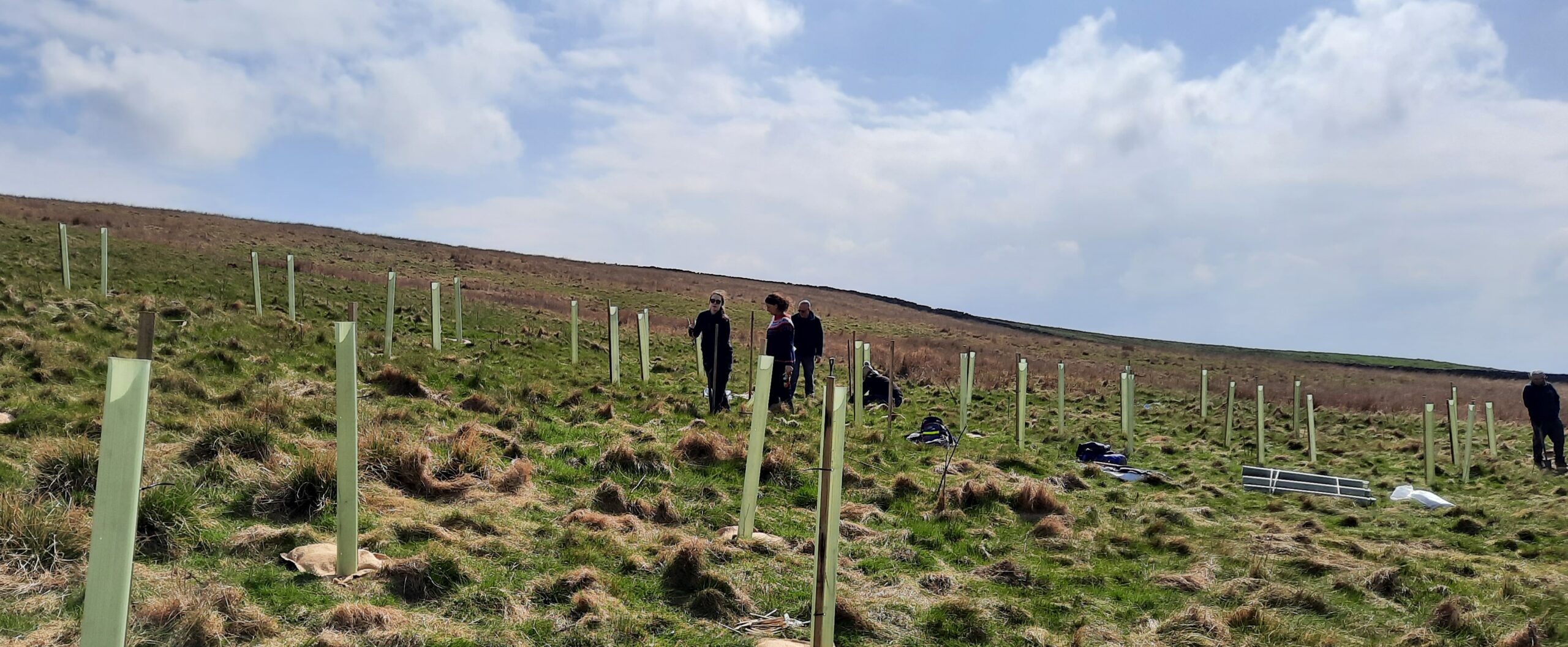
Broadleaf tree planting and tree protection
Water gates were installed across water courses to prevent neighbouring livestock from destroying saplings. The gates were installed through YDMT’s local contractors and will be maintained through YDMT in the future.
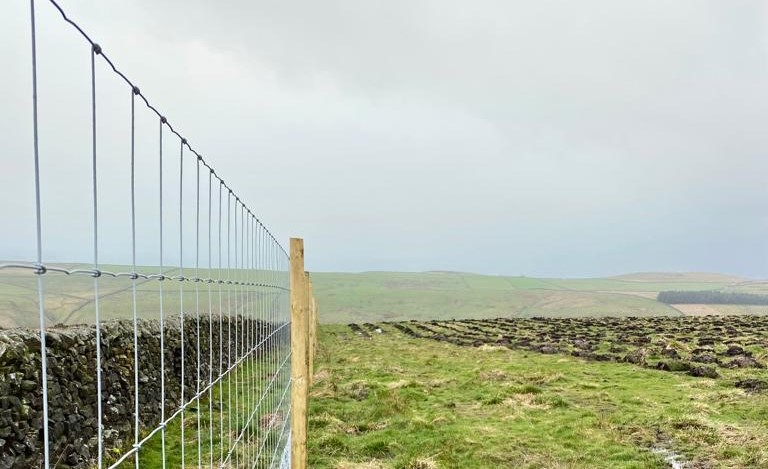
Deer fencing
Yorkshire Dales Millennium Trust (YDMT) delivered the planting of 1,220 broadleaved trees through their outreach projects, local community and supporter groups. The groups were involved in every stage of the development, from installing signage and markers to creating their own 0.76- hectare woodland. Tilhill took part in the community supporter’s days which also included businesses such as Tarmac, Leeds Building Society and Settle College.
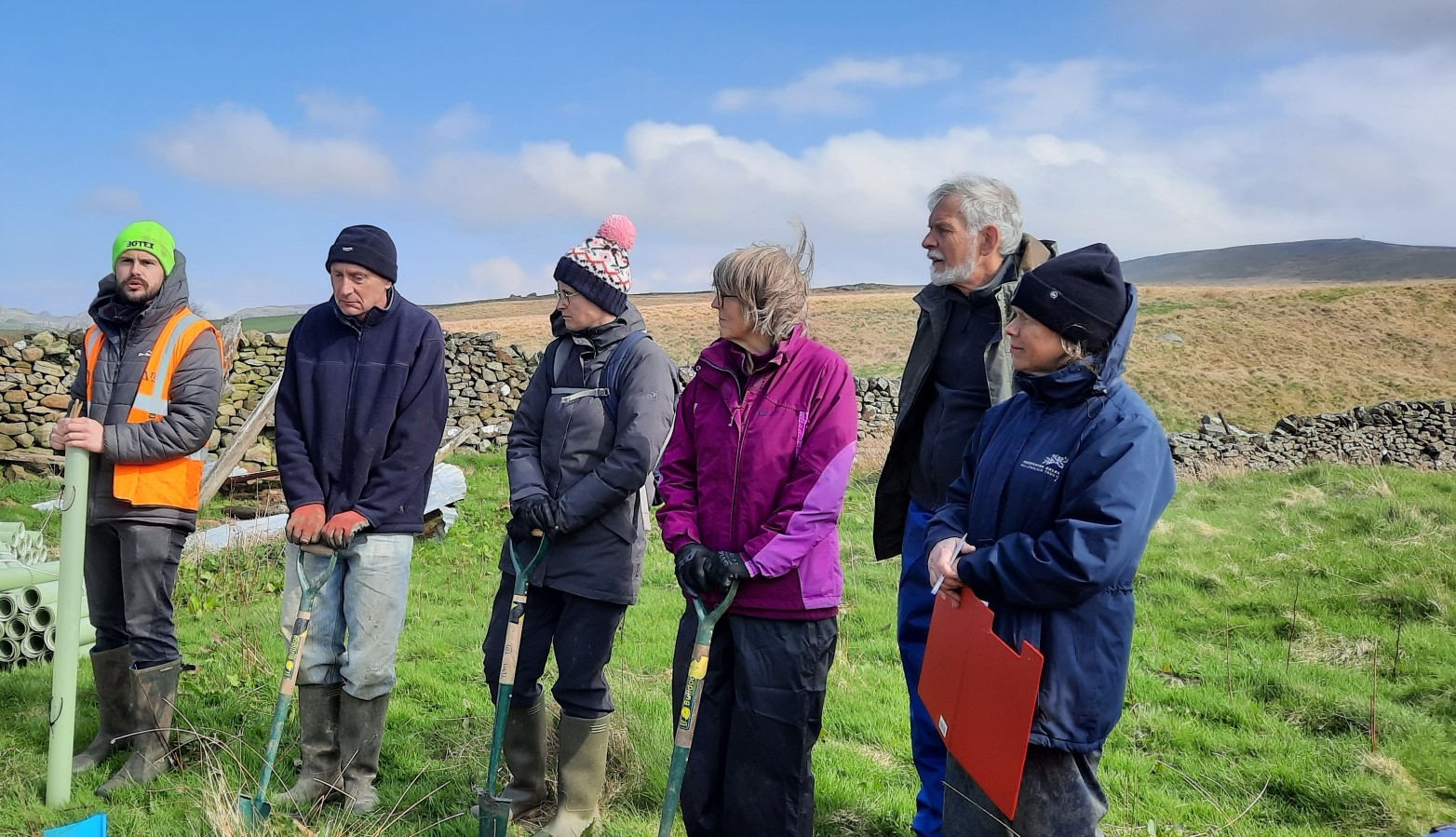
YDMT with Tilhill Forest Manager Luke Wheeler demonstrating tree planting methods
Community Access
Woodlands provide access opportunities which are proven to be good for mental health and stress alleviation, improving people’s quality of life.
The main woodland compartment was designed with both vehicle and pedestrian access gates. Footpath access was created with long vistas towards Pendle Hill and the surrounding Yorkshire Dales to encourage recreational access for the public to enjoy for future generations.
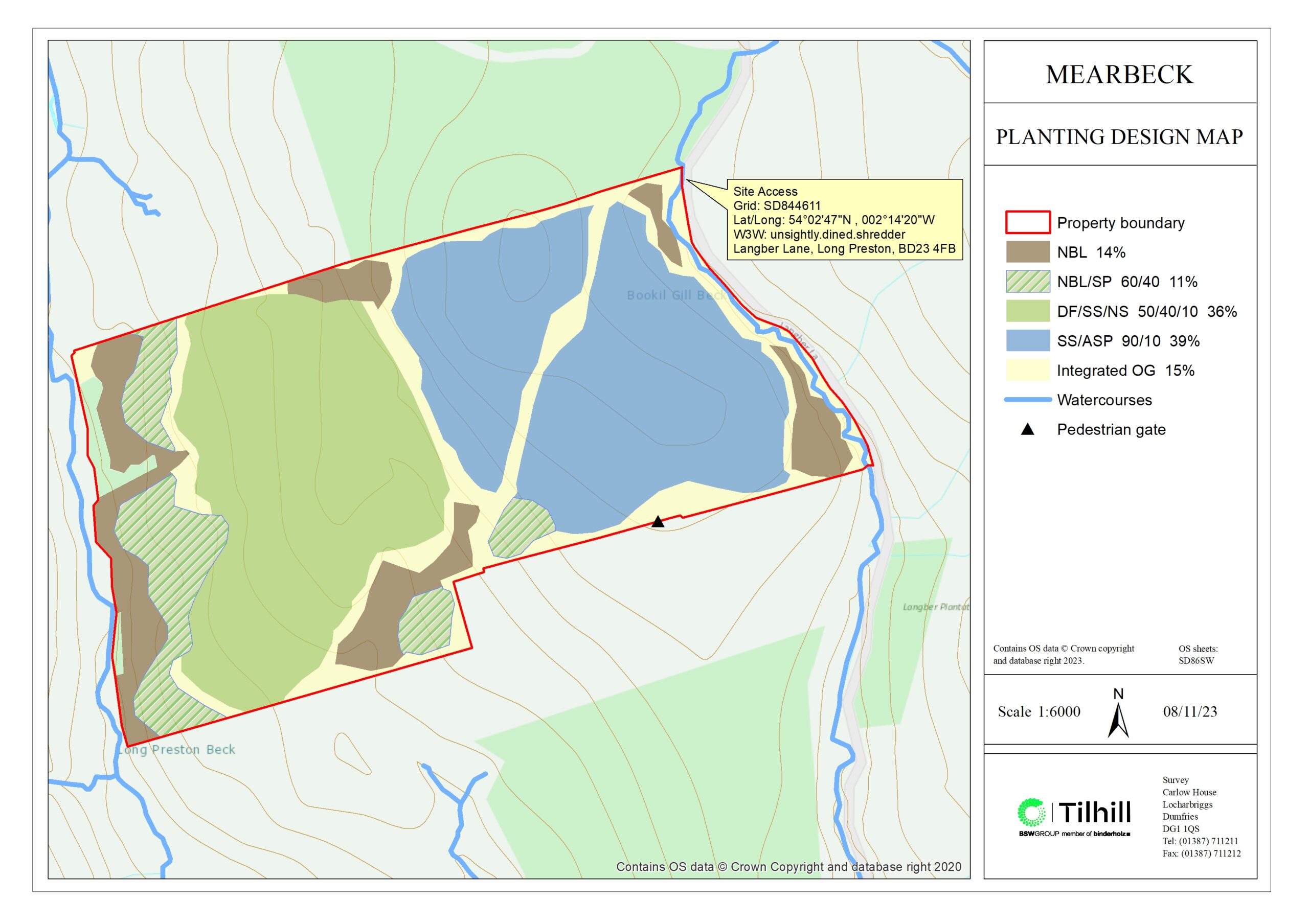
Mearbeck planting map



